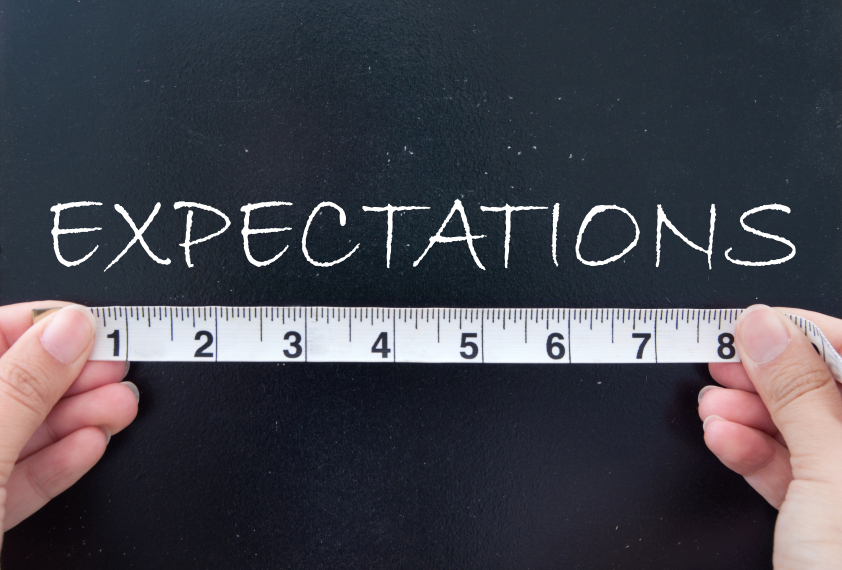This interview is part of a new DorobekINSIDER mini series with experts looking to help shape a management platform for the new administration. Check out all of the stories in the new series, Good Government Management, here.
Have you ever made a list of expectations? It could have been your self-expectation list (like a list of goals or tasks to accomplish) or it could have been a list of things you expected of others. Maybe you haven’t. It isn’t necessarily a common practice, but maybe it should be.
Shelley Metzenbaum, Senior Advisor for the Volcker Alliance and former Associate Director for Performance and Personnel Management at the White House Office of Management and Budget, sat down with Christopher Dorobek on GovLoop’s DorobekINSIDER to discuss three main expectations we should have for our new leader, as well as the importance of discussing these focus areas before we put a new president in office.
“I would love the next president to make a commitment to run government in a business-like manner; recognizing that the return on government investment is public value-a public return that takes on many different forms,” Metzenbaum said.
Federal Government’s CEO
First and foremost, Metzenbaum said the next president needs to be the federal government’s CEO. In effect, she wants him or her to meet with each cabinet appointee within the first three months in office to discuss their short and long-term goals (e.g. Agency Priority Goals). Cabinet member should be able to readily share information about their agency/organization’s trends and past experiences.
Then, Metzenbaum expects that they will follow-up with the president in about six to nine months to report on any improvements and how to continue to show progress. If need be, the president and cabinet leaders can also figure out whether they need to reframe the goals so that they can be achieved. Afterward, Metzenbaum explained that “the White House OMB apparatus can continue to have those conversations on a regular basis, continuing as by law now, the quarterly reporting.”
Transparency
Data transparency around performance is also something Metzenbaum hopes to see improvement on. “The Obama Administration did a huge transition on performance work and how it isn’t just about producing performance reports or producing performance plans, but about truly improving performance,” Metzenbaum said.
This approach can be applied to areas such as performance goals set out by the cabinet leaders. These leaders can continue to work on their transparency efforts by sharing and learning techniques from one another. Two such mechanisms already in place are the White House’s Leadership Development Program, focused on cross-agency goals, and the OMB/Performance Improvement Council’s Leaders Delivery Network.
Mentzenbaum also referenced Performance.gov and praised it for providing a lot of information relative to a small set of very important goals that need to be met. However, she hopes to see a continued enhancement on sharing, ideally within the first year of the new administration. “I’d like to see all the goals of the federal government linked to social indicators so that anybody can sort through it all.”
The Role of Senior Executive Service Members
Current Senior Executive Service members should be discussing how to best incorporate incoming leadership. With every new administration, political appointees come into leadership positions across the federal government. Some of them may have no prior experience in their appointed agency and may not understand the pre-existing work dynamics. As such, it is the role of current senior civil servants to collect all the necessary data for these new leaders as they enter this new world.
Metzenbaum said that this data should naturally include key performance indicators, trends, risks, and what key decisions the political appointees will have to face in the short-term. Most importantly, these transition papers should include “what goals, issues, outcomes, and indicators said agency or organization is trying to influence. Also, explain what set of tools have been used, whether or not it has worked, and some pre-existing alternatives to consider.”
There is nothing wrong with having expectations – even high ones. In fact, dialogues about how the new administration needs to go about achieving them should start now.
Metzenbaum has written about presidential transitions for the Senior Executives Association, writing:
I suggest that every SES start, in early 2016, preparing background material showing historic trends on key performance and other relevant indicators for the multiple goals of their organizations; describing strategies used to bring about improvement; discussing what worked well and what did not; and examining what worked well in other countries doing similar work and at the sub-national level. After the election, pull together a list of specific options and goals informed by the campaign of the winning candidate, done in the context of the realities of the law and resources.
This post was originally published on February 24, 2016.





Leave a Reply
You must be logged in to post a comment.